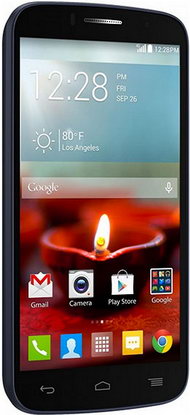The Williams F1 Team launched its 2013 challenger the Williams FW35, at the Circuit de Catalunya in Spain today.
The new Williams FW35 is a culmination of more than 12 months’ research and development by the team’s technical departments in Grove and features improvements in several key areas over last year’s race-winning FW34.
“Given the rule stability over the winter. I’m pleased with the gains that we’ve been able to make with this car. It’s a better, more refined Formula One car than the FW34 and I think everyone involved in the project can feel proud of the work they’ve done.,” said Williams Technical Director Mike Coughlan.
Despite being an evolution of 2012’s car, more than 80 per cent of the FW35 is new. It has a new gearbox, new rear suspension, new radiators, a new floor, new exhausts, new bodywork, a new nose and a significant amount of weight has been saved as well.
With many new parts on the car, the team has carried out a lot of reliability work over the winter. The gearbox alone has already completed 3200kms on the dyno, a lot of which was conducted in the form of five straight Grand Prix weekends.
The FW35 will continue to be developed throughout the year, beginning with an aerodynamic upgrade in time for the first race. By season’s end it is expected that the FW35 will have made strong performance improvements and Coughlan is in no doubt over the main area of gain.
Williams FW35
“The Coanda effect is going to be a big thing for us,” added Coughlan. “There’s been no rule clarification concerning this area of the car, so we’ll work closely with Renault to maximise the available gains. Use of the DRS is more restricted this year, so we’ll take some resource away from that and focus on other areas.”
“A group of talented people with good imagination and plenty of courage have been working together to build the Williams Renault FW35. We will have to wait until Australia to truly see what we have, but we believe it is step forward from last year’s car which was also a very competitive vehicle. Pastor is a delightful character who is a massively determined racer, whilst Valtteri is quieter but still waters run deep and he is a highly gifted driver,” stated Team Principal Frank Williams.
“Williams has been at the top many times over the last 30 years. It’s the nature of the sport to have ups and downs, but when we are down we always fight our way back. I’m hoping that with the current team we have in place, our new FW35, the combined talent of Pastor, Valtteri and Susie, and the continued support from our partners; we will be in a position to challenge the very best,” he added.
“Starting my third season with Williams is important for both myself and the team,” said Williams F1 driver Pastor Maldonado. “We’ve been working hard to develop the car and improve our performance. Last year we won a race and were competitive, but this season we must be even more competitive which I believe is possible. Consistency will be our aim to close the gap to the teams in front. There are a number of changes this season; I have a new Race Engineer and a new teammate in Valtteri, but there is a nice atmosphere right now as we are all competitive and know each other well. Being part of the Williams family is very special as a driver and I want to thank Frank for not only giving me the opportunity to drive for him, but also to deliver a win. My goal is to help take the team back to the top.”
“It feels great to now be promoted to race driver with Williams this season,” said Valtteri Bottas. “It’s a big step and I’m really looking forward to it. I have been doing a lot of training, meeting with my engineers and working in the simulator in preparation; so I feel ready. We know we have improved our car from last season but I am looking forward to seeing how it compares on track. We have a busy test programme ahead but I’m really excited. The moment the start lights go out in Melbourne is a moment I have been building towards my whole career.”
The team has eight days of on-track testing in Barcelona scheduled with the new car, prior to leaving for the Australian Grand Prix at the beginning of March.
Williams FW35 Technical Specifications:
Chassis construction: Monocoque construction laminated from carbon epoxy and honeycomb surpassing FIA impact and strength requirements
Front suspension: Double wishbone, push-rod activated springs and anti-roll bar
Rear suspension: Double wishbone, pull-rod activated springs and anti-roll bar
Transmission: Williams F1 seven speed seamless sequential semi-automatic shift plus reverse gear, gear selection electro-hydraulically actuated
Clutch: Carbon multi-plate
Dampers: Williams F1
Wheels: RAYS forged magnesium
Tyres: Pirelli, Fronts: 245/660-13, Rears: 325/660-13
Brake system: AP 6 piston calipers all round, carbon discs and pads
Steering: Williams F1 power assisted rack and pinion
Fuel system: ATL Kevlar-reinforced rubber bladder
Electronic systems: FIA SECU standard electronic control unit
Cooling system: Aluminium Oil, Water, KERS, and gearbox radiators
Cockpit: Six point driver safety harness with 75mm shoulder straps & HANS system, removable anatomically formed carbon fibre seat
Engine: Renault RS27-2013 2.4L V8, 90 V angle, 32 valves, aluminium block and pistons, nitrided alloy steel crankshaft with tungsten alloy counterweights, titanium connecting rods, 8 butterfly throttle system, 18000 rpm maximum speed
KERS: Williams F1 battery, MGU and electronics
Dimensions: Overall length: 5000mm, Overall height: 950mm, Overall width: 1800mm, Weight: FIA Minimum
source & images: Williams F1






